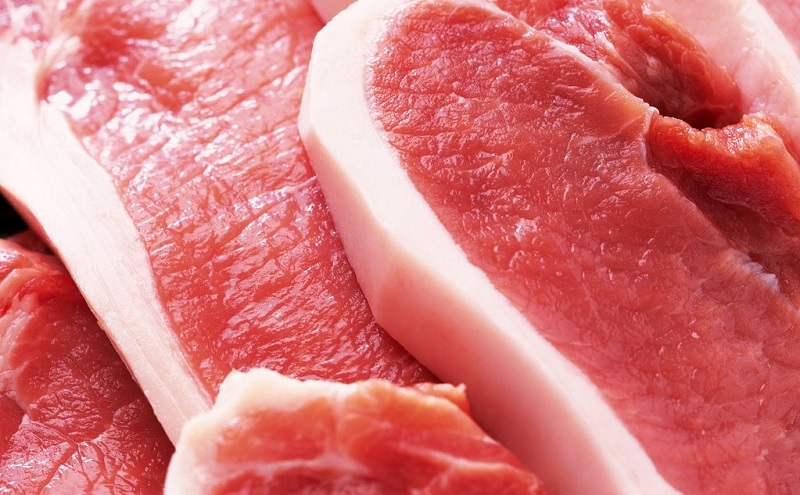Deluge of meat imports set to surface
 |
| Deluge of meat imports set to surface (illustration photo) |
From January 1, tariff barriers on the remaining goods under the agreement (ATIGA) are being relieved. Accordingly, fresh meat, including pork, chicken, and products made from these meats will be traded within the ASEAN region with zero import tax.
Meanwhile, in early December, the United States proposed that Vietnam cut tariffs on some import goods for consumption, including the aforementioned meats. In particular, the US asked to reduce tax on meat and poultry products from 20 per cent to 14.5 per cent in 2020 and zero in 2028, while fresh or chilled pork will be down from 25 to 18.9 per cent in 2020, with plans to scrap the tax altogether in 2027.
In response to the request, the Ministry of Finance intends to reduce import tax rates on chicken meat and its frozen products from 20 to 18 per cent. For pork, the tax rate will be adjusted from 25 per cent to 22 per cent, approaching the rate cut in 2019 under the Comprehensive and Progressive Agreement for Trans-Pacific Partnership of 21.6 per cent, as the most-favoured-nation tariff does not have the rate of 21 per cent.
Expressing worries about the movements’ impact, economist Dinh Trong Thinh said that right now the Vietnamese products are less competitive than their American counterparts. If Vietnam cuts the tariff, this would put pressure on its livestock industry.
“Some farmers could go bankrupt if cheap US products are imported to Vietnam on a large scale, thus affecting economic security,” Thinh said.
Thinh also said that the Philippines, Thailand, and Indonesia, while committing to remove tariff barriers within the frame of the ATIGA, have still applied necessary measures to protect their sugar industry.
“They have installed technical barriers like regulations, licences, and fees to control the penetration of sugar imports from the ASEAN into domestic markets,” he added.
Meanwhile, Do Hoang Long, development and sales manager of Japfa Comfeed Vietnam told VIR that he is not afraid of competition, but “increasing the amount of imported meat will lead to the risk of spreading disease and cause an imbalance between supply and demand, leading to lower prices.”
According to Long, the issue is important, particularly when in Vietnam there is no exact market forecast, the role of associations is weak, and farmers and enterprises try to cope with diseases by themselves.
The latest data from the Import and Export Department under the Ministry of Industry and Trade (MoIT) shows that in November, the volume of imported pork reached more than 15,000 tonnes with a turnover of $15.9 million, up 164 per cent in volume and 113 per cent in turnover compared to the same period last year.
Overall, in the first 11 months of 2019, Vietnam’s pork imports reached more than 111,000 tonnes with a turnover of $124 million, an increase of 108 per cent in volume and 97 per cent in turnover over the same period in 2018.
In the first 11 months, the average import price of this commodity was $1,117 per tonne, equivalent to about VND26,000 (around $1.10) per kg. After adding a number of taxes, including import tax, 5 per cent value added tax, costs, import procedures, cold storage, the meat was eventually priced at about VND35,000 ($1.50) per kg.
However, currently, import prices have tended to increase compared to previous months due to increasing demand. Pork imported from countries to Vietnam is currently subject to the most-favoured-nation tax with frozen meat at 10 per cent, while fresh and chilled meat is 25 per cent. For countries that have free trade agreements with Vietnam such as Australia, New Zealand, Japan, Russia, and Mexico, import tax stands at about 3 to 21 per cent.
The Ministry of Agriculture and Rural Development has signed bilateral agreements on animal quarantine and technology with 19 countries, with a total of 1,641 foreign enterprises allowed to export pork and pork products. Meanwhile, Vietnam has about 140 enterprises permitted to import pork from other nations.
According to the MoIT, up to the end of the first quarter in 2020, Vietnam will import 100,000 tonnes of pork to both guarantee supply and stabilise the price.
What the stars mean:
★ Poor ★ ★ Promising ★★★ Good ★★★★ Very good ★★★★★ Exceptional
Related Contents
Latest News
More News
- Standing out in the Chinese outbound investment wave (December 29, 2025 | 10:29)
- Bright spots obvious in foreign investment mission (December 29, 2025 | 09:00)
- Ho Chi Minh City hits $8.37 billion in FDI (December 29, 2025 | 08:28)
- Vietnam and UK cooperation backs finance talent for IFCs (December 27, 2025 | 16:31)
- Global partnerships key to Vietnam’s IFC development (December 26, 2025 | 16:18)
- Vingroup pulls out of bid to invest in North-South high-speed railway (December 26, 2025 | 11:42)
- Strengthening supply chains through trade promotions and customs reform (December 24, 2025 | 14:00)
- PM orders investment model for North–South high-speed rail (December 22, 2025 | 17:43)
- LS Eco Energy to invest in Vietnam rare earth sector (December 22, 2025 | 17:31)
- Government moves to establish International Financial Centre (December 21, 2025 | 21:00)

 Tag:
Tag:















 Mobile Version
Mobile Version